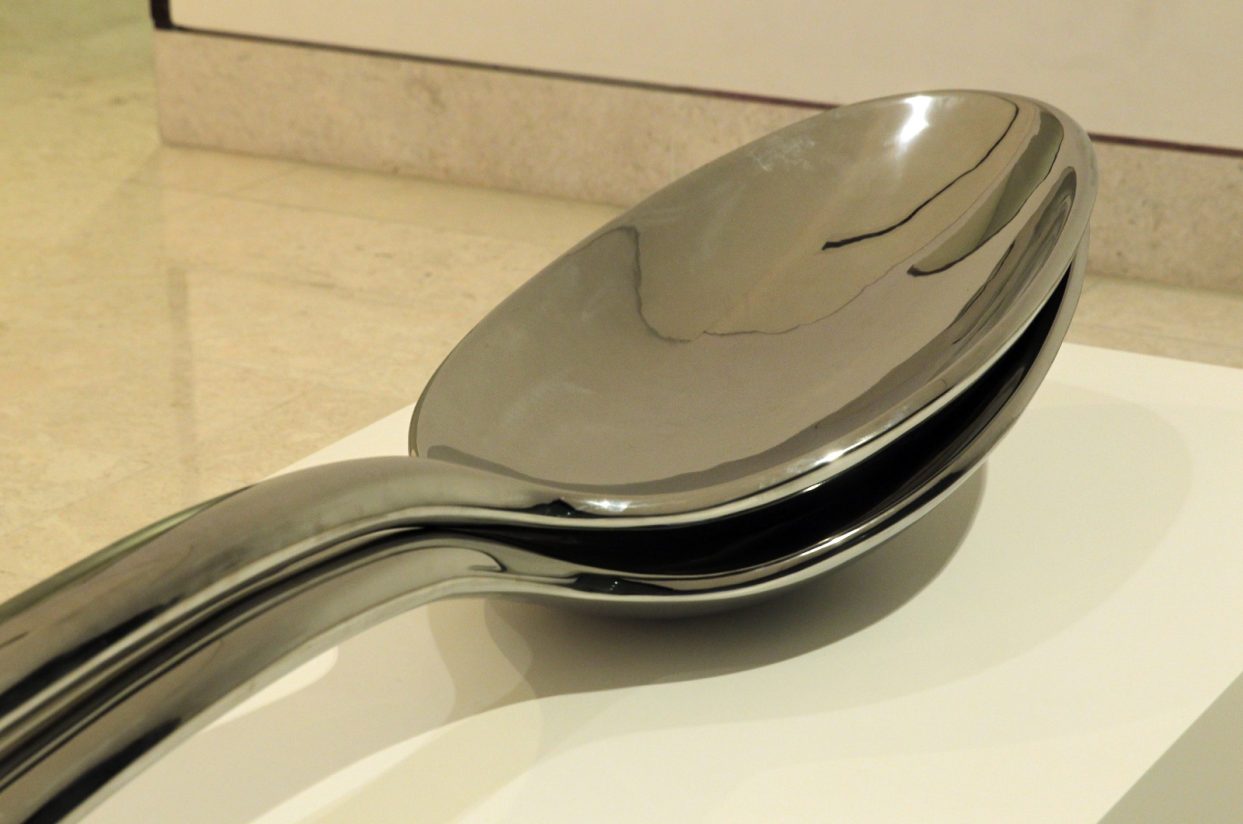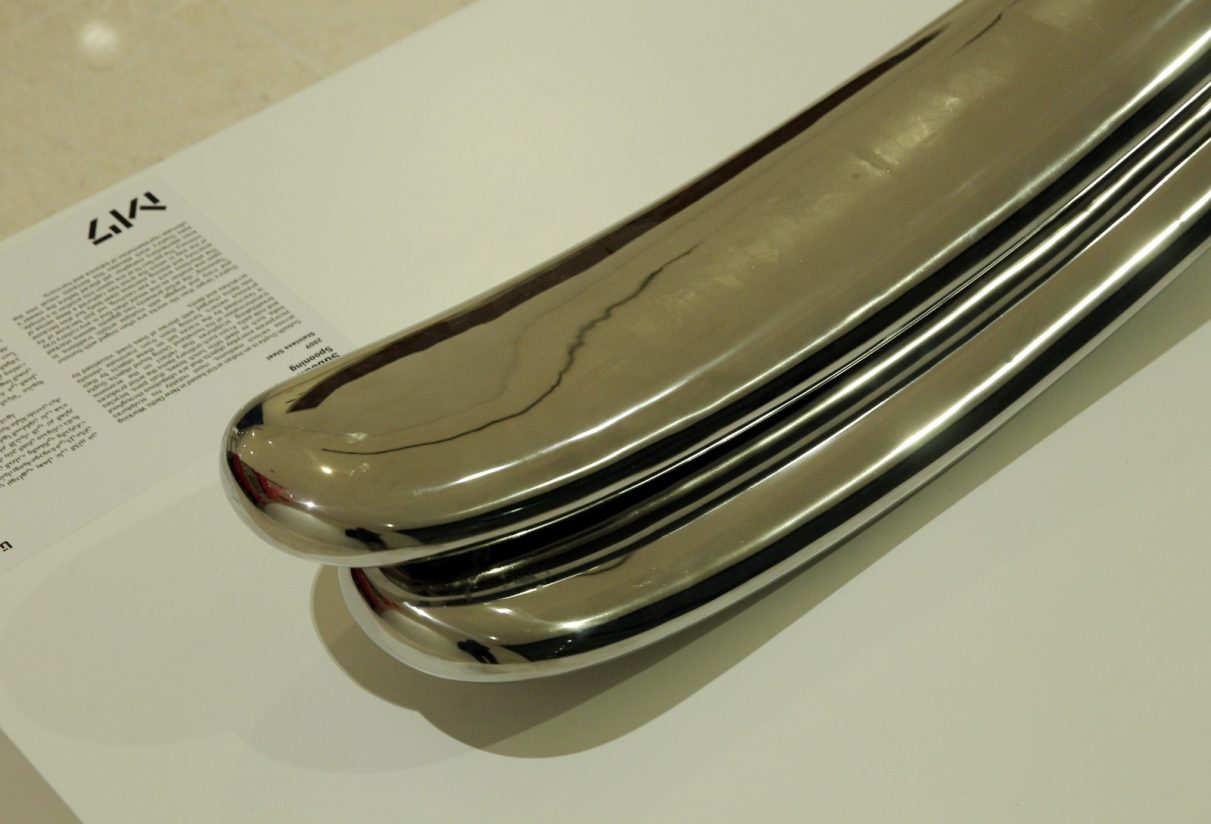Create, Experiment and Move Forward
This is how Subodh Gupta, one of the most prolific contemporary artists from India, describes what he does, every day, as an artist. “The more you do your work, the more you create and challenge yourself, the more you will find newer ways of expression,” says the artist whose recent work, brought to Doha by Qatar Museums, is open to the public at M7. By Sindhu Nair
Subodh Gupta, one of India’s most known contemporary artists with his installations spread across the world, from New York, Paris, Tokyo, South Korea. has two of his installations in Doha, as well. The first work of his that we all have seen and appreciated is Gandhi’s Three Monkeys that tackles the challenging themes of war and peace. The three-part sculpture that consists of three heads – one in a gas mask, one a soldier, and the other is in a terrorist hood, add to Katara’s cultural setting. Another very recent Subodh Gupta installation, called Spooning, takes its place within M7, the cultural start-up hub for designers within Msheireb Downtown.
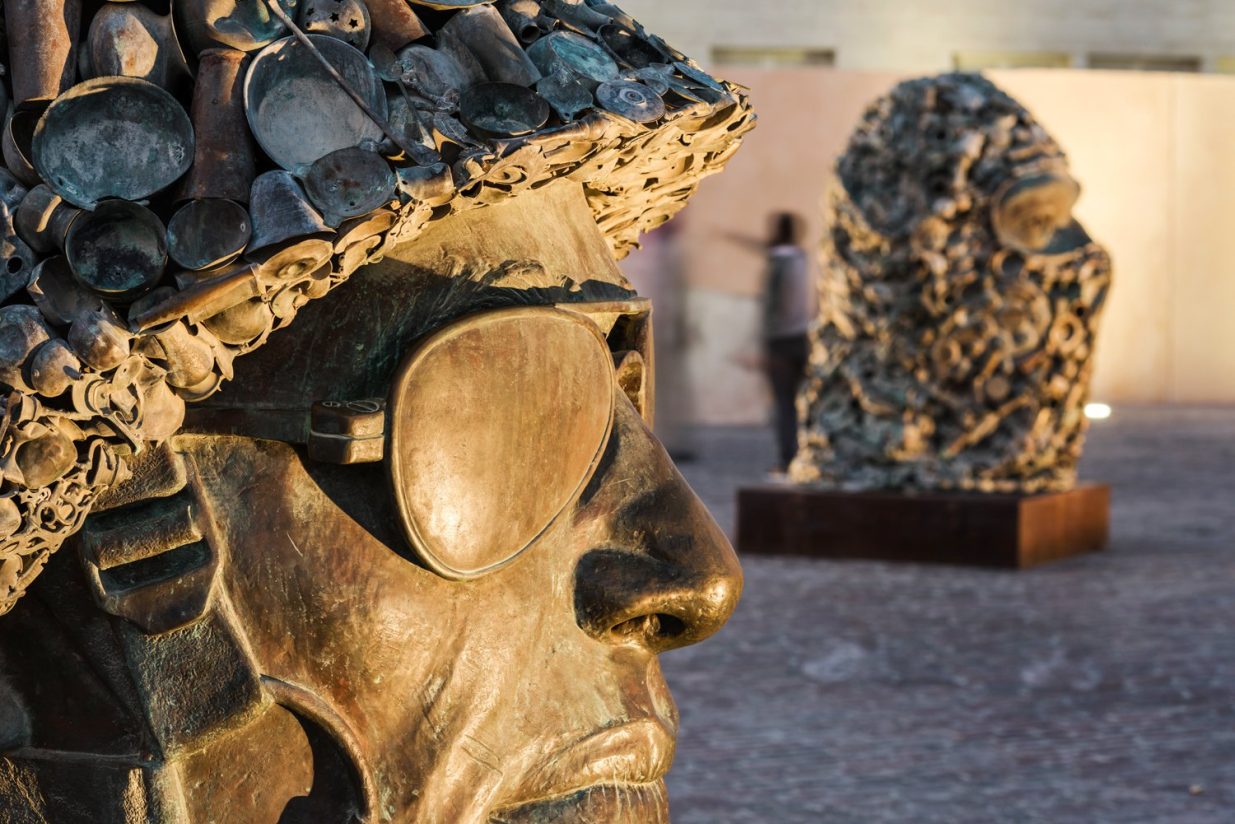
Three Monkeys by Subodh Gupta that represent the ‘see no evil, hear no evil, speak no evil’ proverb at Katara.
The artist is known to work with everyday objects such as mass-produced steel utensils, found routinely as part of household kitchens throughout India. The ordinary items are combined and transformed into sculptures that reflect the social and political economies of Gupta’s homeland while acknowledging multiple references from the history of Modern Art. While stainless steel is his signature medium, he also executes works in bronze, stone, brass, wood, clay, and fibreglass. His work with commonplace objects that are part of his childhood becomes part of the local surroundings while set in India and takes on an exotic tone when they move out of his country.
Speaking about the latest work of art, Spooning, Gupta says, “I have been working with utensils for 20 years and this work is very much part of that unique language of ready-mades that I have built for myself. Yes, it’s larger than life but so are the things I want to believe in. For me, when I put two spoons together and see how they stick to each other, almost like a lover – that’s the belief I want you as a viewer to have that how can this commonplace object in the way that it is arranged to evoke a feeling of love within you? It is romantic and aesthetic at the same time, and definitely one of my most important works.”
We talk to the artist about his association with Qatar Museums which makes it possible for a larger group of people to see and appreciate his work in the Middle East, about the state of affairs of the art collections in India, his association with Kochi Biennale, the back story to each of his work, and how it all started from theatre and the impact his performance has on his viewers. Provocative and free-wheeling, his words are as compelling and intense as his works of art.
SCALE: Spooning is your third installation in collaboration with Qatar Museums? How has the journey been with Doha and QM?
SUBODH GUPTA: Qatar Museums has collected three of my large-scale works, each through my gallery as far as I know. From these, I have seen the Three Monkeys piece installed of course, but I have not yet seen the other two. I know they have exhibited those works as well, and I am very proud that people are able to access them. The fact that they can see my work is a great thing for me.
My relationship with Qatar for the last 15 years has been extraordinary, as they are great hosts – a quality we both share! Some of the projects they invited me to do have materialised to great success while others have not yet, but I know well that these things take time and more so as they are amongst the most serious collectors in the world. It’s really amazing to be part of that kind of institution they are building, and engage deeply with the kind of art they are collecting. Qatar is going to be an international hub for arts and culture for sure.
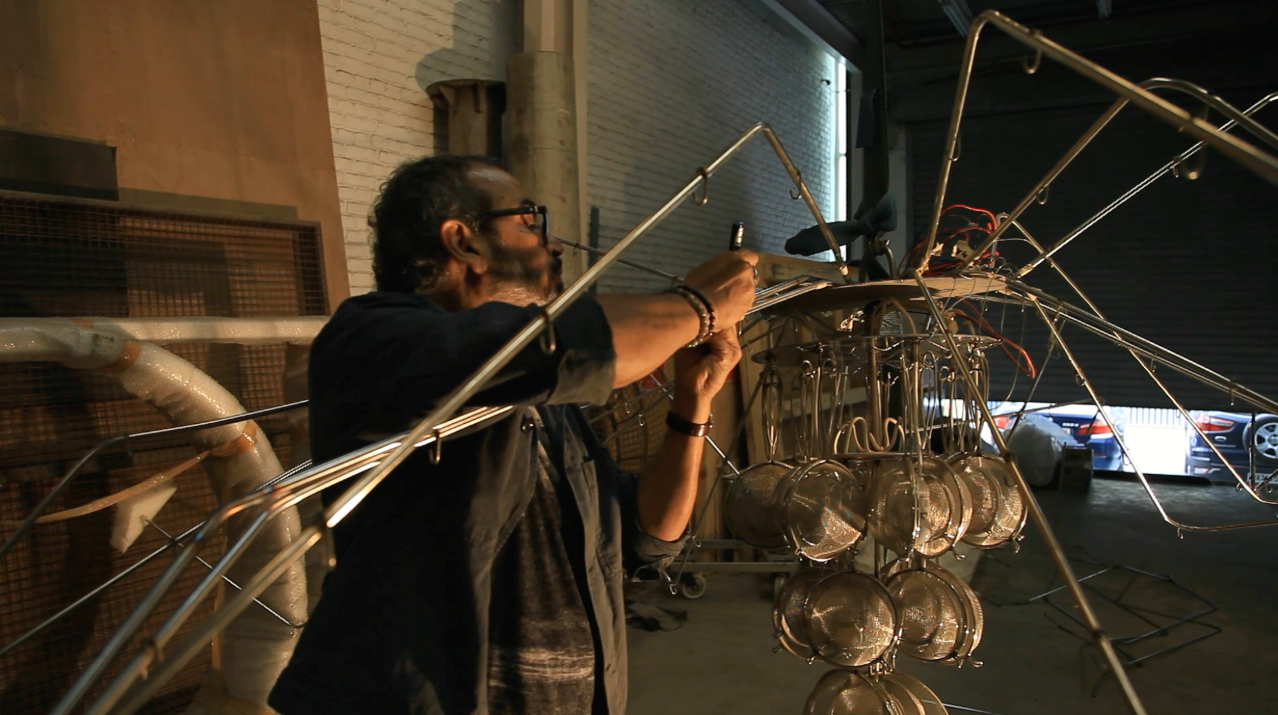 SCALE: Was there a brief for this installation, was it commissioned work, or were you free to create your own masterpiece? Has the context or the location of the installation affected your planning?
SCALE: Was there a brief for this installation, was it commissioned work, or were you free to create your own masterpiece? Has the context or the location of the installation affected your planning?
SUBODH GUPTA: There was no brief for this installation and it’s not a commissioned work either. I created it for myself – that’s who most of my work is for anyway – and for my exhibition of course, from where it was directly acquired. So, there was no location planning as such and I like that my work lends itself to different collectors exhibiting it differently as their space allows.
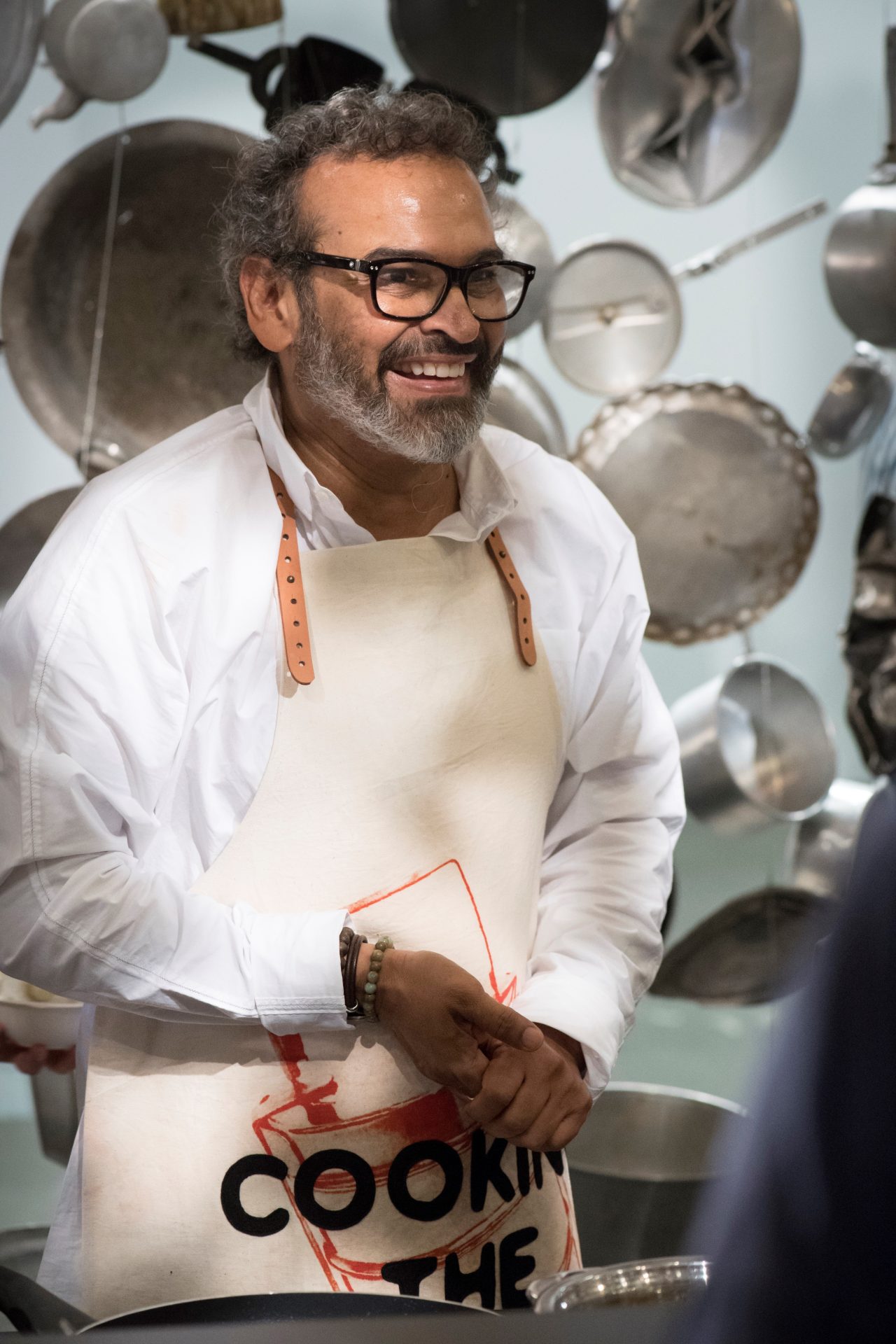 SCALE: When did you transition to working on larger-than-life stainless steel objects? Does this refer to a particular period in our art career?
SCALE: When did you transition to working on larger-than-life stainless steel objects? Does this refer to a particular period in our art career?
SUBODH GUPTA: I wouldn’t call it a transition but rather an extension. I have been making large works for a long time now, but I don’t do it for the sake of largesse. You have to understand where I am coming from, and like I always said in my work – there is a back story to everything, every material has its own history its own associations. And my story as an artist starts from the theatre. So that’s my training and to this day it impacts the kind of work I do, who I am when I am making. When you do a performance piece you invite people in, and when I am making a sculpture, I see it very much like that. Even though it is still, it has to invite you to come and see me. In that way, I am able to represent both content and concept, and somewhere along the way knowingly or unknowingly, things become large.
SCALE: Which are the other materials that you explore in your creation?
SUBODH GUPTA: I have always been a true multimedia artist. I make sculptures, installations, performances, video, photography, and of course as you all know – food! So, I am definitely a multi-tasker. I have experimented throughout my career and still, I do; this curiosity be it for cow dung or stainless steel is what makes me an artist. I find myself returning to painting a lot more now – it is after all the point from where everything begins.
SCALE: Being already known internationally for your creative genius and with a repute of selling your art to prolific collectors, does it impose unnecessary pressure on your work? Do you produce work keeping in mind art critics or is the creative process more organic?
SUBODH GUPTA: When you work for so many years and are fortunate to work with many good galleries, many people come to know your work. I am grateful for all those who believed in what I do and it is because of their support that I was able to exhibit internationally and become so widely collected. I am very proud of that, but if you ask me if that impacts my creating the artwork then I’m dead! For any artist, creation is a birth, each time. The more you do your work, the more you create and challenge yourself, the more you will find newer ways of expression. The way I see it, that’s my job really – to create, experiment, and move forward. That’s the only thing I know how to do. It doesn’t matter to me who collects my work. If someone thinks in that manner, they are not an artist, I am sorry.
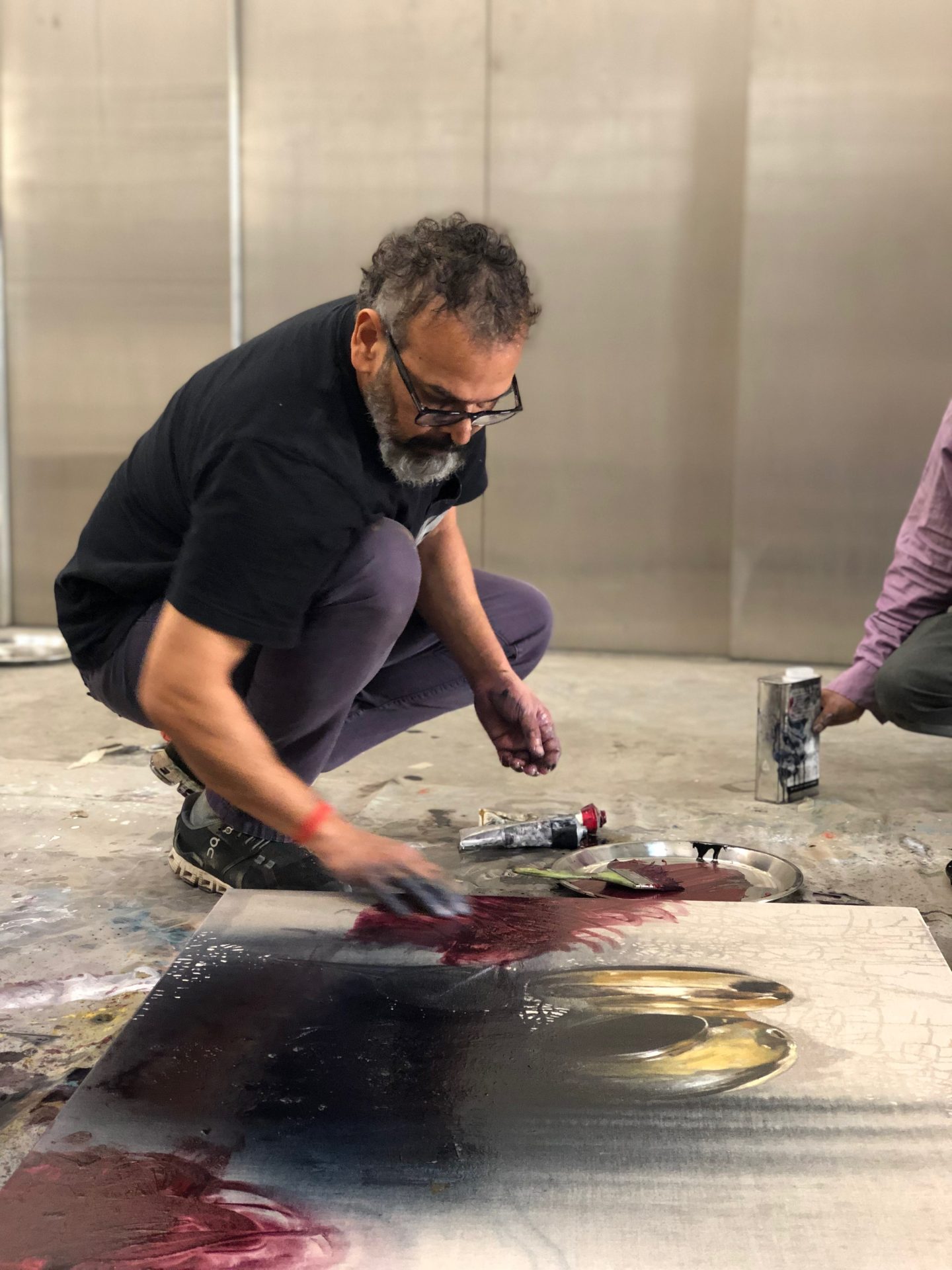 SCALE: How do you think Indian art has grown during the pandemic? How did you cope with this dark period in the history of mankind?
SCALE: How do you think Indian art has grown during the pandemic? How did you cope with this dark period in the history of mankind?
SUBODH GUPTA: India is a very big country and if I have to talk about the growth of Indian art then the first place, I look is museums. Sadly, we don’t have that many. I would say we don’t have enough contemporary art galleries or collectors even. Of course, there are many new scenes and younger collectors now, but the seriousness of the art is still held by only 5 or 6 galleries in the country. There are not nearly enough government museums, and amongst the private ones maybe only two? As of now, only Kiran Nadar holds the court and that’s the life and breath for us artists. I don’t know anyone who has a collection of Indian art as huge as Kiran Nadar Museum of Art (KNMA) and I am always in awe of her passion and dedication, but there need to be more people like her. The government could get involved a lot more too, so people can see all the greatness that this country has. This is what we lack right now. And of course, the pandemic has made this worse by depleting resources for an already scrambling art ecosystem. It’s not easy to be an artist in a country like ours where institutions who teach and support are so few. For me too, the pandemic was a time of great isolation, but also a time of great creativity. When I witnessed the horrors that our country experienced, along the same time I had Covid myself, the only way I knew to cope was by making art again.

Subodh Gupta, What does the vessel contain, that the river does not, 2012. Installation, boat, wood, and found objects, 9 x 65 ft. Courtesy: Kochi Muziris Biennale
SCALE: Tell us about your association with the Kochi Biennale.
SUBODH GUPTA: Kochi Biennale is a great thing to happen to our country – our first biennale! And it’s not easy I tell you because I have seen it so closely, I must really appreciate the organizers. They have done an amazing job. I always support those who are invested in the arts and culture ecosystem of India, and above all, I support the value of friendship. They were kind to invite me for the first edition, where I was able to help build something so organic from the ground up, but also where I was able to make one of the most important works that really brought me to a reckoning point in my practice. That’s what friends do!
SCALE: How often have you visited Doha? Thoughts about the art scene here in the Middle East
SUBODH GUPTA: I have visited Doha a few times in my life and am so excited about watching football there very soon! The Middle East has always been very serious about building robust art and culture sector, as a way of soft diplomacy almost and I really laud that. The way they are building museums and collecting art, inviting artists and thinkers and all kinds of people, definitely shows you, their seriousness. And you can see the changes in the last 20 years now reaching a critical mass so a big salute from me!
SCALE: What does the art scene need most? More artists or more patrons of art?
SUBODH GUPTA: Art of course. And Artists. Always artists and art lovers are who keep the system going. Without them we are nothing. And maybe I will also say we need more great art. There is so much noise in what we are surrounded by, so what I am really interested in now is to listen deeply to those artists whose work speaks to something within me.
Images of the artist: Courtesy the artists’ office.



